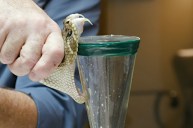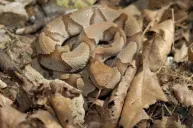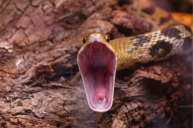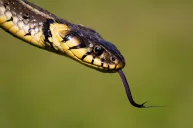This viper's hide and seek game is second to none!
For snakes, camouflage is everything. It helps them to ambush prey and it helps keep them safe from the prying eyes of predators that would like to turn them into lunch. Some snakes have a better talent for hiding than others. In the case of the sand viper, this snake's skills are near unmatched.
That is because this snake species will quite literally bury itself in the sand.
It is one of those things you simply must see to believe. A word of warning if you have a phobia of snakes, do not watch this right before heading to the beach!
https://www.instagram.com/p/B_-H3qFjjN4/?igshid=1esbjw4o95a9e
Not even this serpent's eyes are visible once he is done burying himself. If you did not know what to look for, this snake is sitting there in wait like a ticking time bomb. Watch your step! This species goes by several different names including the Egyptian asp, Saharan sand viper and the Avicenna viper.
For clarity, the sand viper, aka: Cerastes vipera, IS venomous. However, if you live here in the U.S., you have nothing to fear from this expert hiding reptile. The sand viper is found mostly in North Africa. More specifically, in parts of Morocco, Egypt, Chad, Libya, Tunisia and Algeria.
As for why this species likes to bury itself in the sand, this is one of this animal's sneaky hunting tactics. While the snake does actively pursue prey, it also likes to hide in the sand to ambush prey. We should mention this animal's prey is going to be small. This snake only grows to about 14 inches long.
It is a sneaky hunting strategy. While this ability may frighten some people, you should not be afraid of this snake. If you leave it alone, odds are it will leave you alone too. We enjoyed seeing this animal's amazing ability. It just gives us even more appreciation for the wonders of nature!
For more outdoor content from Travis Smola, be sure to follow him on Twitter and check out his Geocaching and Outdoors with Travis YouTube channels.
NEXT: BABY COPPERHEADS: HOW TO IDENTIFY THEM AND GET RID OF THEM
WATCH





